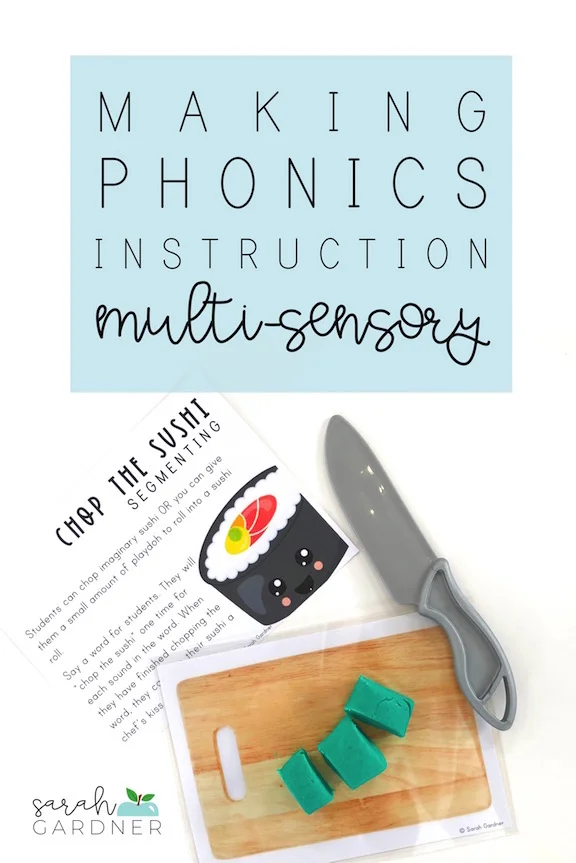A Multisensory Approach to Phonics (and a FREEBIE!)
WHAT IS MULTISENSORY LEARNING?
For most of our phonics lessons, our students have to engage their senses of sight and hearing. They look at what we present to them and listen to what we’re saying in order to process information and store it for later. Multi-sensory learning, on the other hand, engages many of our students’ senses at once.
For example, when we teach students to add and subtract, we don’t just tell them how it works and expect them to remember! We give them manipulatives like counters to model these mathematical processes. They are engaging their sense of sight, touch, and hearing. These activities are both tactile and kinesthetic. You are likely already incorporating many multi-sensory learning opportunities into your math instruction - why isn’t it common to do the same thing in our phonics instruction?
Multi-Sensory Learning is:
Visual
Auditory
Kinesthetic
Tactile
SO, WHY IS MULTI-SENSORY LEARNING IMPORTANT?
Multi-sensory learning benefits all students, but especially students who struggle with attention or visual and auditory processing skills. You may be thinking, “well, I don’t have any students with auditory processing issues” - but you may be surprised. Check out this graphic by Speech Buddies.
ANOTHER REASON TO USE THESE STRATEGIES? IT’S FUN. AND DON’T YOU LEARN BETTER WHEN YOU ENJOY WHAT YOU’RE DOING?
So, enough about the why - let’s move on to the how. There’s an infinite number of ways to make learning multi-sensory for your students, but I wanted to give you some actionable strategies that you could implement in your classroom today. That’s how this Multi-Sensory Phonics Kit was born.
I’ve included teacher reference cards that explain each routine, the materials you’ll need, and directions for how to guide your students through the activities. These cards are the perfect size to hole-punch and store on a loose binder ring for easy access at your small-group table.
So what’s inside the student kits? The picture cards from the Multi-Sensory Phonics product - they include a cutting board, blender, mixing bowl, and cheese grater. I also include a cut rubber band, a small piece of play-doh (a little goes a long way!), and a plastic knife. I love that they are super simple and full of things you likely already have laying around your classroom. The kits can be stored in a sandwich size ziploc bag and they also fit perfectly in these photo cases from Michael’s.
Here are some of the routines in action:
Feeling ready to bring multi-sensory learning to your classroom? GREAT! Your students will thank you. These multi-sensory learning activities (and more) are included in my Bite-Size Phonics packs - a paperless, no-prep way to bring your phonics instruction to the next level. Check out a “bite” for FREE by clicking the picture below.
Here’s a peek inside the Bite-Size Phonics Bundle:
Want to save this post for later? Pin the image below!














